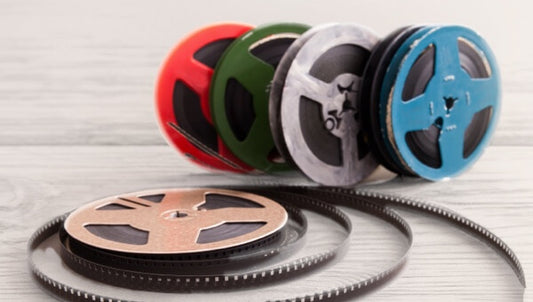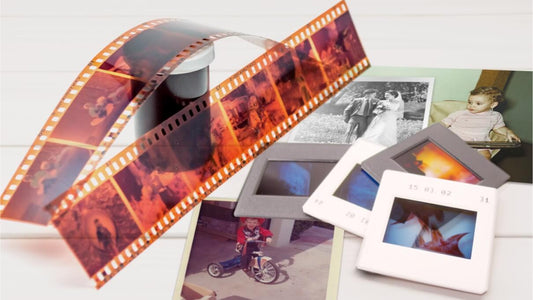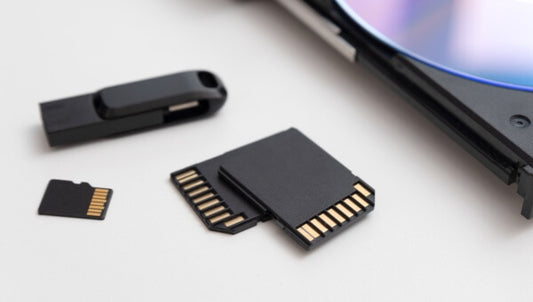If you grew up with videotapes and VCR systems, then this technology probably had an impact on your childhood. It not only made it possible to record and re-watch your favorite movies and television shows, but also provided an affordable way to capture special occasions and priceless memories.
With over 20 years of experience digitizing videotape home movies and other analog media, Capture understands the importance of VCR technology and how it shaped, and continues to shape, the home media landscape. That’s why we put together this blog to answer the question, “When did the VCR come out?”
Keep reading to not only learn when VCRs came out, what a VCR really is, how the new technology evolved throughout the years, and how it continues to impact our lives today.
Jump to:
- When Did the VCR Come Out?
- Understanding VCR Technology
- Evolution of VCRs
- The Birth of VCRs
- Historical Context
When Did the VCR Come Out?

The video cassette recorder, or VCR, first came out way back in 1956. However, the first VCR made by Ampex was much different than the later types most people think of because it was made for television networks and cost $50,000 (which is around $325,000 today!).
Since most people associate VCRs with the history of the VHS format, it’s good to include that release year as well. The first VCR to use VHS tapes was introduced by JVC in Japan in 1976.
Understanding VCR Technology

A VCR is a video cassette recorder that uses electromagnetic signals to record audio and video onto magnetic tape. That way, you can save the recording of television or some other source and keep rewatching it for years to come. However, it’s important to note that those signals on videotapes like VHS don’t last forever.
Early VCR technology, while pretty basic, worked pretty much the same way as later types. It would accept a videotape and read the signals. Then, it would convert the signal so that the television could read it and display the program. As the magnetic tape from a videotape moves past the recording head at a specified rate, the rotating head reads and writes data and turns it into the horizontal resolution lines that the television then shows to you. This process is called helical scanning.
This technology and the VCR’s arrival in the market made it possible for broadcasters to pre-record television shows. It also led to home use versions so that people could record their own television programs and rent their favorite movies from video stores like Blockbuster to watch at home, instead of only seeing them in the movies at a scheduled programming.
While that may not seem like much now that most people have transitioned from VHS to digital streaming and you can watch anything you want with the touch of a button, the VCR debut revolutionized home entertainment.
Evolution of VCRs

When television started getting immensely popular in the 1950s with classic TV shows like “I Love Lucy,” the only way to preserve video footage was by using a kinescope. This led to poor quality broadcasts, so most television networks simply made live broadcasts directly from the studio to viewer playback.
However, Japanese electronics companies like RCA and Sony knew they needed recording technology so that they could not only broadcast to different time zones at suitable times, but to repeat popular programs. This would later evolve into rewind and fast-forward technology.
Magnetic tape was already used for audio, but the only movie technology available at the time had to be captured initially using an 8mm film camera. Companies put a lot of effort into researching magnetic tape to figure out how to not only store audio, but to add video storage as well. The problem was that video requires much more data.
Finally, the company Ampex had a breakthrough in VCR invention history leading to the birth of the first VCR system. They had figured out that instead of moving the magnetic tape around the heads at excessive speeds, the heads themselves would spin to read the video data.
The Birth of VCRs

Now we get to the point where we answer, “When did the VCR come out?” In 1956, Ampex introduced the VRX-1000. It was the size of a large desk and carried a price tag of $50,000, but this first VCR model was bought by television broadcasters.
After the VCR invention date, CBS was the first to use the new recording technology by airing “Douglas Edwards and the News” on November 30, 1956, from New York and then replaying it from their Hollywood studios a few hours later. Television had changed forever and there was a clear path to home video playback.
In 1964, Sony released a home model and Ampex and RCA followed the next year. These machines, while much cheaper than the first VCR system, were still expensive and mostly bought by schools, businesses, and wealthy consumers. However, the VCR revolution was in sight and affordable vintage camcorders were on the horizon.
Cartrivision debuted in 1972 as a household recording system. These 8-inch plastic cartridges could record shows and the blank tapes cost around $1 per minute of recording time holding only around 15 minutes per tape. While still expensive it was indicative of the home VCR emergence.
Several companies including Sony, JVC, and Matsushita (now Panasonic) launched the U-Matic videotape in 1971, it was mostly a failure because it was extremely heavy and expensive. This development in the history of VCRs led to more compact options like VHS and Sony’s Betamax tapes.
This led to the format war between the two videotape formats and the compatible VCRs contributed to the outcome. Sony retained rights to their Betamax format, which meant consumers had to pay more for the tapes as well as the VCRs.
JVC, on the other hand, shared their technology which meant VHS VCRs and VHS cassettes were made by numerous companies like Philips and RCA and adopted by video rental stores. This led to the VHS format winning the format wars and becoming the go-to video home system despite Betamax offering higher picture quality.
VHS dominated the industry until the release of DVD players and Blu-Ray years later. Then, when everybody began to convert VHS tapes to digital the VCR development timeline was coming to an end. While no company makes VHS machines anymore, Funai Electric made them all the way until 2016 when the last VCR was made.
Historical Context

The origin of VCRs may have been over 60 years ago, but the first VCR has influenced home video recorders all the way to today. Additionally, there were some legal battles involving videotape recorders that also influenced the availability of streaming and recording possibilities to this day.
For example, in 1984, the Supreme Court ruled that home recording of television programs for later viewing was considered fair use. They said that time-shifting did not substantially harm the copyright holder or diminish the market for the original product.
Additionally, the format wars between Betamax and VHS would accelerate technology and lead directly from analog video formats to digital options like MiniDV. DVD, Blu-Ray, and, eventually, digital downloads and streaming.
Conclusion
While the answer to, “When did the VCR come out?” seems simple, it depends on what you mean by VCR. The first VCR from 1956 is the true answer, but if you meant the VHS VCR, then it wasn’t until 20 years later in 1976. Either way, the VCR release date contributed to a long line of progress through the digital age. It also helped to create countless memories of Blockbuster movie nights and camcorder memories.
If you have videotapes containing home movies, then it’s a good idea to convert them to digital to preserve the memories forever. Capture offers high-quality digitization for a wide variety of videotape formats. Click here to learn more!











